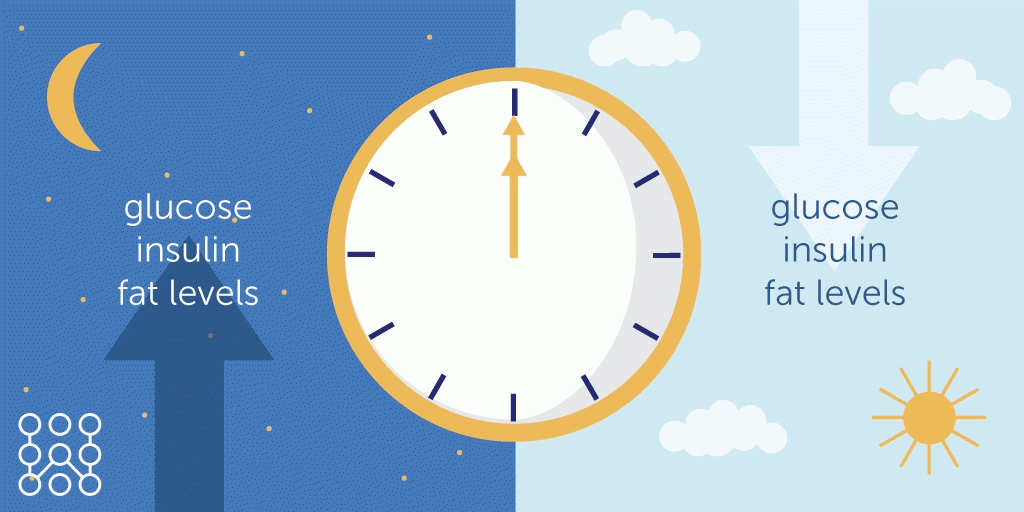Top 5 Takeaways from the Light #WELLography
by Gayathri Unnikrishnan

We could not be more excited to share the Light WELLography™ after the Great American Eclipse, which took place on Monday. In case you weren’t in the path of totality or didn’t have a fantastically homemade contraption for viewing the moon’s path across the sun, fear not, the Light WELLography will get you up to speed on everything you need to know about light and how it impacts you.
Here are our top takeaways from the Light WELLography:
1. Varying frequencies across the light spectrum impact the body in different ways.
For example, frequencies in the visible spectrum stimulate photoreceptors in the eye helping to form images and align the body’s physiological activities while higher frequency radiation in the infrared part of the spectrum can be felt as “heat” on the skin. Higher still, some frequencies, like X-rays, can be used in medical imaging technology to get a glimpse of the body. Refresh your memory on the basics of light in the Properties of Light section of the WELLography.
2. Your “internal clock” (found in the hypothalamus of the brain) coordinates essential bodily functions.
Humans, like many other mammals, operate on an approximately 24-hour day, this is called circadian rhythm. Specialized photoreceptors in the eye called ipRGCs, are responsible for perceiving both the natural and electric lighting conditions in our environments and aligning physiology to those conditions. The main way the body’s internal clock impacts our circadian physiology is through the hormone melatonin. Exposure to light suppresses melatonin making us feel alert and ready for the day. When the light stimulus diminishes (during times of darkness), melatonin levels rise in the body and signals that it is time to catch some zzz’s. Read more about photoreceptors and circadian rhythms in the Light and the Human Body section of the WELLography.
3. Small changes to your daily routine can help your body align its’ circadian rhythm.
- Take WELLness walks. Beyond keeping your step-count up, WELLness walks are a great way to gain some extra natural light exposure throughout your day. While you’re out there walking the walk and talking the talk, you are aligning your circadian rhythm to the solar day, increasing your alertness levels, and producing vitamin D.
- Power down your devices before bed. Light exposure at night, especially blue light from screens, signals the body that it is daytime, inducing daytime physiology like alertness, elevated heart rate, and increased body temperature. Explore the Light WELLography for more information on the impact of light at night and strategies to limit your exposure.
- Pay attention to what time of day you're eating. Having a fixed routine in place with consistent and appropriate timing for meals, exercise and sleep can help maintain your circadian rhythm. More specifically, as day-active animals, we metabolize food better during the day compared to the night. Eating at night will cause higher glucose, insulin and fat levels in the blood compared to when eating the same meal during the day.
To learn more about how light impacts health and strategies for designing spaces that can help align with the body's natural circadian rhythms, download, our new WELL app, Build WELL.
Gayathri Unnikrishnan is on the Standard Development team at IWBI where she draws upon her experience in the construction industry to manage the processes for innovations, alternative adherence paths and equivalency proposals. With her background in lighting design and engineering, Gayathri serves as the subject matter expert for lighting and is passionate about human centric design in the built environment. In her free time, Gayathri enjoys going on long walks and exploring neighborhoods around New York City.
Sources:
1. Considerations on Design Optimization Criteria for Windows Providing Low Energy Consumption and High Visual Comfort. Ochoa, Carlos E, et al. 2012, Applied Energy, Vol. 95, pp. 238-245. http://www.sciencedirect.com/science/article/pii/S0306261912001419.
2. Otis, Tiffany and Reinhart, Christoph. A Design Sequence for Diffuse Daylighting: Daylighting "Rules of Thumb". [Online] March 13, 2009. [Cited: August 21, 2015.] Harvard University Graduate School of Design.
3. Light as a modulator of cognitive brain function. Vandewalle, Gilles, Maquet, Pierre and Derk-Jan, Dijk. 10, Oct 2009, Trends in Cognitive Sciences, Vol. 13, pp. 429-38. https://www.ncbi.nlm.nih.gov/pubmed/19748817
4. Sunny hospital rooms expedite recovery from severe and refractory depressions. Beauchemin, Kathleen M and Hays, Peter. 1-2, s.l. : Journal of Affective Disorders, 1996, Vol. 40, pp. 49-51. https://www.ncbi.nlm.nih.gov/pubmed/8882914.
5. Dying in the dark: sunshine, gender and outcomes in myocardial infarction. Beauchemin, Kathleen M and Hays, Peter. 7, London : Journal of the Royal Society of Medicine, 1998, Vol. 91, pp. 352-354. https://www.ncbi.nlm.nih.gov/pubmed/9771492.Lockley, Steven W and Foster, Russell G. Sleep: A Very Short Introduction. New York : Oxford University Press, 2012. https://books.google.com/books/about/Sleep_A_Very_Short_Introduction.html?id=iYI3GLTHzAUC

